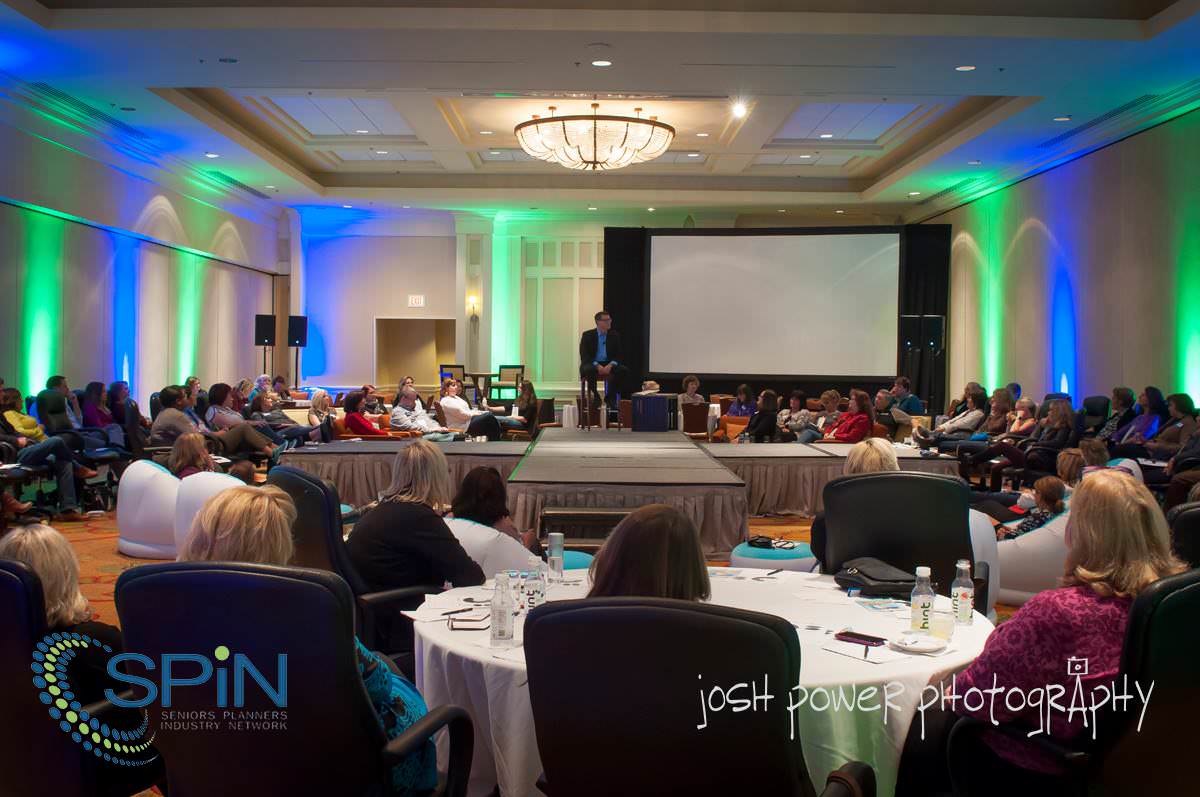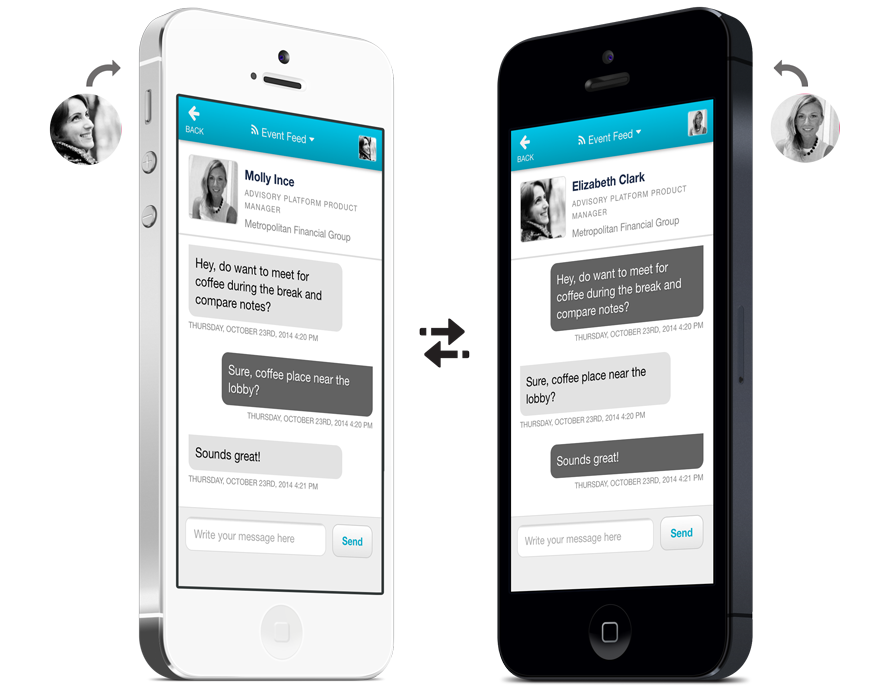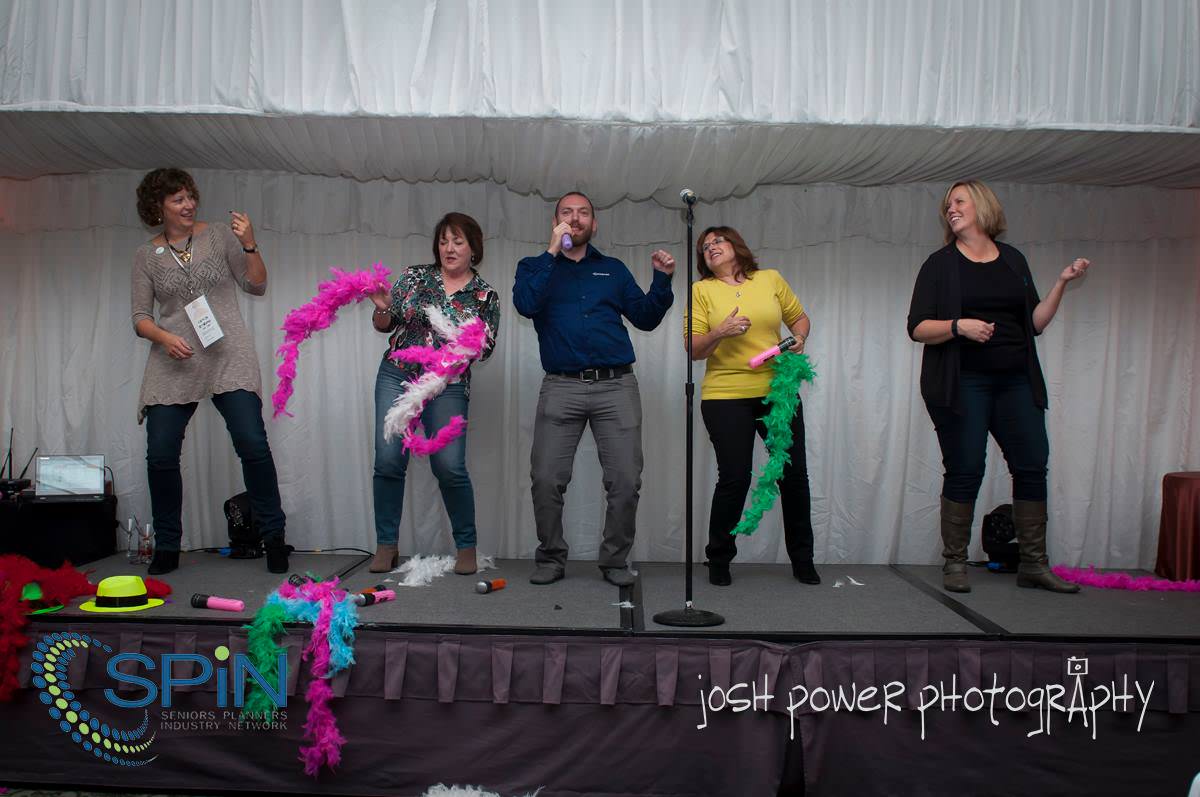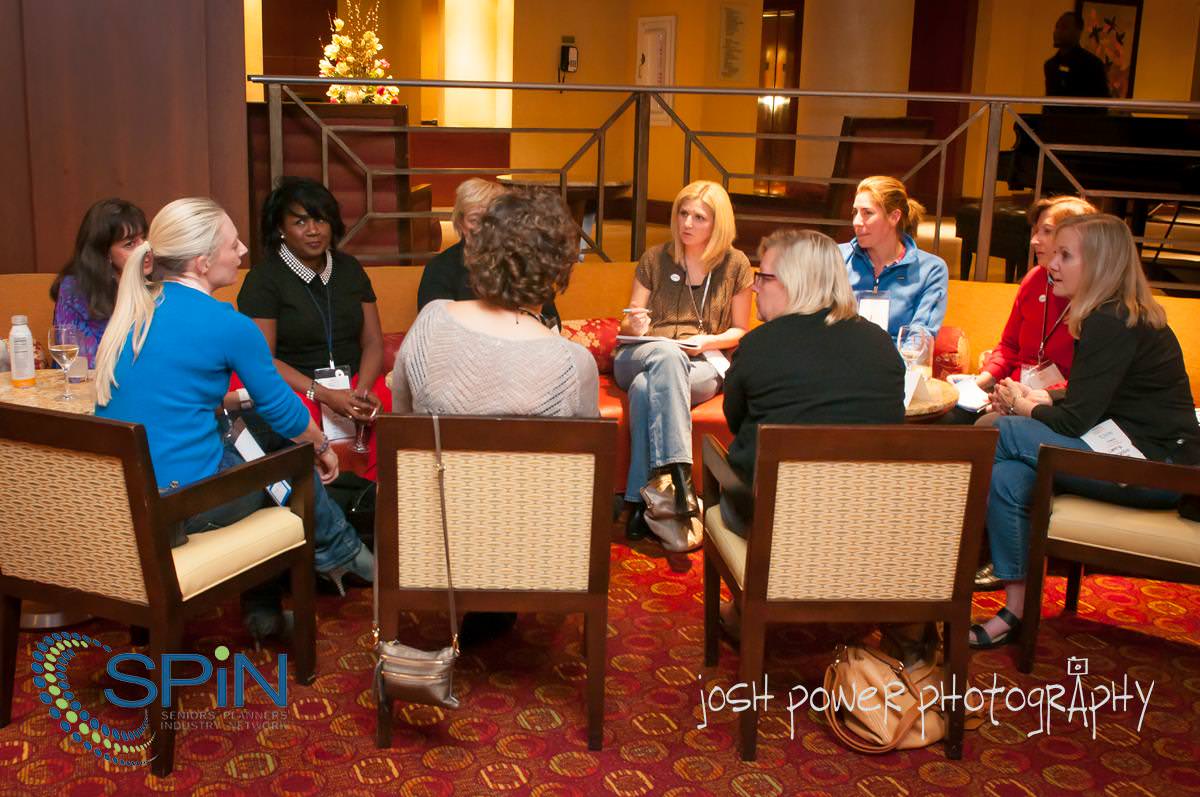3 Ways an Event App Can Enhance Networking
For tech-enthusiasts like us, watching technology in action is a beautiful thing. Even more gratifying is seeing the many ways technology improves the face-to-face connections that happen every day at events.
EventMobi recently attended SPiNCon 2015, the annual conference for the Senior Planners Industry Network (SPiN). We got to see how technology gives planners and attendees a leg up in the all-important project of networking at events. At SPiNCon, members get together to garner support and inspiration from one another, sharing their experiences with products they like, strategies they’ve had success with, and trends to keep an eye on. In the spirit of sharing knowledge and throwing better events across the board, SPiN planners are also happy to share their feedback with sponsors and vendors as well.
At SPiNCon, Dylan Monorchio spoke about onsite engagement, End-to-End Technology for Successful Event Leaders. At the session, some of the topics that elicited the most discussion were networking and event games. At SPiNCon, educational sessions are well balanced with networking and leisure activities, and since an EventMobi event app supported both, they had a lot to talk about.
Establishing a Presence at the Event
SPiNCon’s mobile event app helped the SPiN planners stick to their policy of running entirely paperless events by providing a digital source for all of the event information. Because it lived on each and every attendee’s mobile device, the conference’s app was also able to leverage all of the great features of mobile technology to support the event experience.
Networking on the SPiN conference app is easy. Every attendee had a profile complete with a picture, short bio, social media links, and professional information so they could get to know one another and showcase their personality. It’s the planner’s prerogative to collect that information during registration and have it appear automatically in the event app, or allow attendees to add and edit their own information themselves through the Attendee Dashboard on the app. The Attendee Dashboard is there to allow attendees to completely personalize their experience, from adding sessions and sponsors to their favorite list, to creating their presence on the event app and managing connections with one another through in-app messaging.
Attendees who were speaking at the event were also linked on the event app to the sessions they were hosting, allowing their audience to find and connect with them quickly. Before the event, attendees were able to view each other and prepare for their conversations, maximizing the networking potential in the times allotted.
Making Connections with In-App Chat
Attendees could also chat with one another right from within their profiles on the event app, which really came in handy during the paperless speed-dating style networking event. Each sponsor sat at a table while planners in teams of two rotated around them. They were given five minutes each to talk about what they did – the operative word being talk. They were instructed to put away their cards, props, and notepads and just have real problem-solving conversations with each other. With only five minutes and two planners to chat with, most of the conversations began with “tell me about a problem you’re having, and I’ll tell you if I know how to solve it.”
Some defiant planners gave business cards despite the rules, but the majority of event professionals Dylan chatted with didn’t have a way to write down names and details. Everyone appreciated having the event app to fall back on and reference later.
In-app messaging is a great way to follow up with other attendees or speakers regardless of the networking circumstances. Messages are delivered back and forth instantly, and recipients are notified within the event app and by email.
This experience is also great for proactive networking. Before the event, Dylan was able to reach out to a few existing clients among the senior planners to see if they wanted to get together at the event. Since attendees are searchable by profile content, he also had the opportunity to contact people based on common interests, designations and locations. For example, he reached out to all the other Canadian attendees to see if they’d be interested in joining him for a group number during the event’s Lip-sync Battle.
Networking Games
The Lip-sync Battle was an example of a networking game. By adding a little friendly competition to a fun activity, the SPiN planners were able to get the whole room excited and engaged. Everyone was either on the stage or laughing in the audience. A silly game like this is the perfect way to disarm even the most shy and guarded participant, making it easy for everyone to start conversations casually and really break the ice.
Event gamification was one of the topics discussed most during Dylan’s session. Planners and vendors are constantly on the lookout for new and innovative ways to engage attendees and turn them into event participants. Gamification seeks to find out what makes games so captivating and leverage those aspects to motivate attendee actions, in turn supporting event goals. Learn about what drives gameplay in our latest eBook: Ultimate Guide to Event Gamification
Networking games on the event app work by creating challenges out of making connections, designing rules to support the types of connections you want people to make, and then incentivizing the activity with points and prizes. The games are easy to play and each type runs on the same simple mechanics. Attendees can see the rules and a list of challenges as soon as they open the game. Each challenge takes the form of a question or clue, and each has a corresponding passcode. Players complete a challenge by entering its passcode, and are awarded points accordingly.
For an ice breaker, you can set up your game to motivate people to make deeper connections by giving each player a passcode and creating a rule wherein people only divulge their codes after five minutes of conversation. If you have specific objectives for the conversation, have players exchange their codes after some number of predetermined topics have been discussed. This is also a great way to create conversations with sponsors, or between buyers and vendors.
Alternatively, you can design a speed-based networking game to give each person a lot of lighter contact, which might involve assigning point values only to particular attendees (who must be sworn to secrecy). Then, it becomes a numbers game as everyone else tries to talk to as many people as possible to uncover the prized players. Vary point allotments to encourage networking between particular groups as well, encouraging connections between industry veterans and newer planners, C-level and lower-tiered staff, etc.
Display the top networkers on a live leaderboard to give people a sense of how far they are from the prize and where they are in the competition. Depending on your audience, simply being recognized for their sociability and networking ability is a powerful incentive to play the game and take the networking activity seriously.
Using a networking game on your event app lets you track each connection made and use hard data to demonstrate the success of the networking event. The number of players indicates how many people at the event were moved to participate, and the number of challenges completed by each player will give you a sense of the average person’s networking success.
To learn more about how to create and evaluate networking games at your events, check out our implementation guide.
Photography by Josh Power Photography



